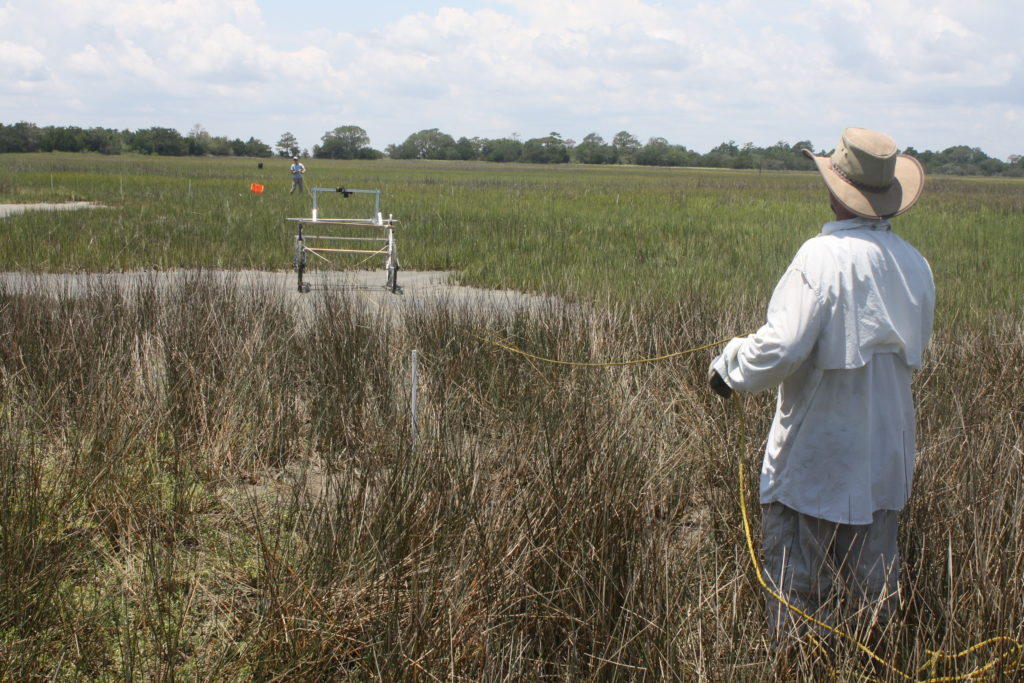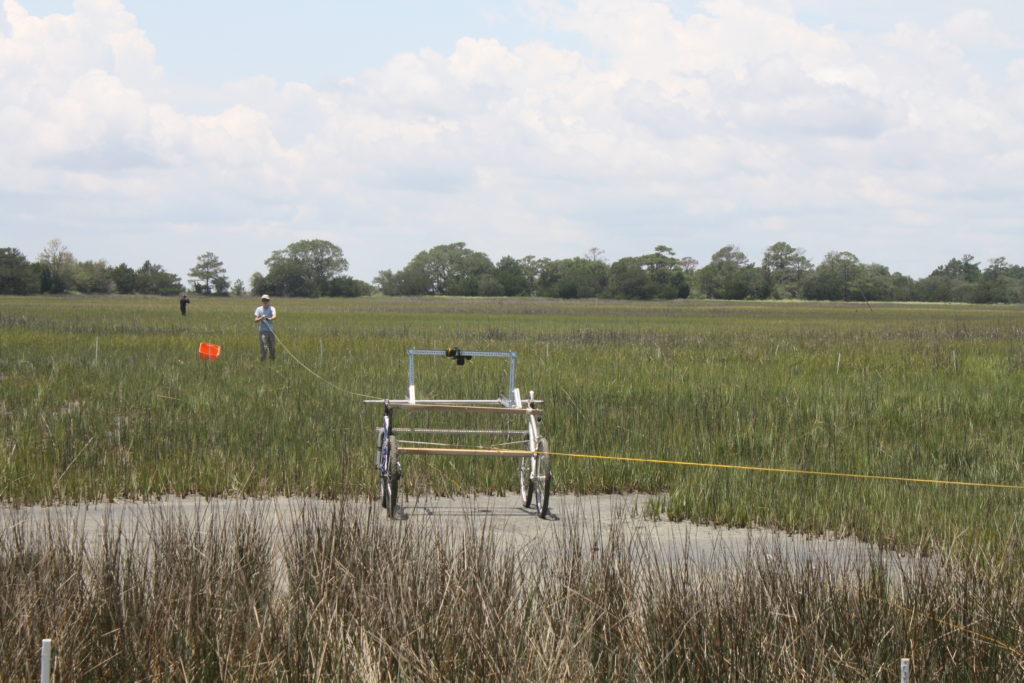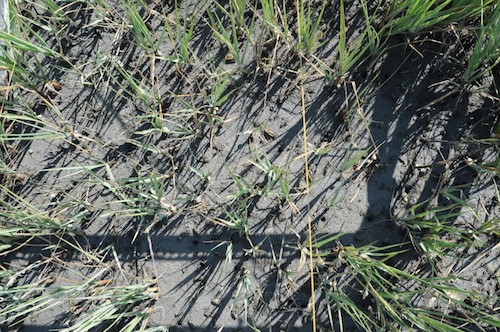Citizen science at our field site

We’re grateful for the assistance that Dr. Andy Penniman has been providing to our field crew over the past few years. Andy has been helping with field experiments and with processing invertebrate samples in the field. He’s also provided us with a number of photographs of our field crew in action.
We have a few opportunities for additional volunteers to help our program. Tasks can be customized to your skills and interests, but we’re looking for a limited number of mature, responsible people who can really make a contribution, either with field work, laboratory work, or outreach.To discuss possibilities, contact Dr. Steven Pennings, GCE Field Coordinator, at scpennin@central.uh.edu.
Citizen science online
We need help from citizen scientists to better understand the ecology of coastal salt marshes. We have over 70,000 photographs of a salt marsh, taken every year from 2010 to 2016. We are using computer tools to align the photographs into mosaics, and to extract information on species composition from the photographs. We’re pretty good at identifying the plants, and now are working on identifying the invertebrates. You can help us by scoring the presence of snails, crabs and crab burrows in photographs. Go to the Zooniverse site (https://www.zooniverse.org/), search for the “Marsh Explorer” project, read the “About” tab, and then get to work classifying images. We will use your data to help assess how effectively automated software can find the same snails, crabs and burrows.
For more information, contact Steven Pennings, University of Houston, scpennin@central.uh.edu.
The details: Why and how we took these photographs
We’re interested in better understanding the spatial relationships among the different salt marsh species. For example, snails may associate closely with one plant species and avoid another. To examine these relationships, we need a map that shows the locations of all the species.
Think of google earth—it has transformed how scientists in many disciplines work, because it allows them to see spatial relationships over a large landscape. But google earth doesn’t get close enough to the ground to see individual plants or snails. So it is not useful for community ecologists. That’s where we come in.
We built a carriage that suspends a camera between two bicycles. The camera points down, about 45 inches above the ground, and takes photographs with enough resolution to see individual crabs, snails and plants.


We pull the carriage back and forth across the marsh using ropes. This avoids disturbing the area very much because we don’t have to walk over the area that we’re photographing. The carriage is pretty light and doesn’t create much disturbance.


The camera is set to take photographs every second. You can see the shadow of the carriage in many of the photographs. The string helps us pull the carriage back and forth in a straight line. Because we’re moving the carriage slowly, the images overlap. And when we go back and forth, we make sure that the rows overlap. Because the area that we’re photographing is large (about 3,200 m2), we end up with 10-15 thousand photographs from one session.

Our goal is to align these photographs into a single “map”, and identify which plants and invertebrates are present throughout. This will give us an unprecedented spatial understanding of how the different species are related to each other. In addition, we can look at change in these relationships over time, because we have seven years of photographs. During this time we had substantial changes in the weather at the site and the plant distributions. We will be able to document these by seeing how the map changes from one year to the next.
